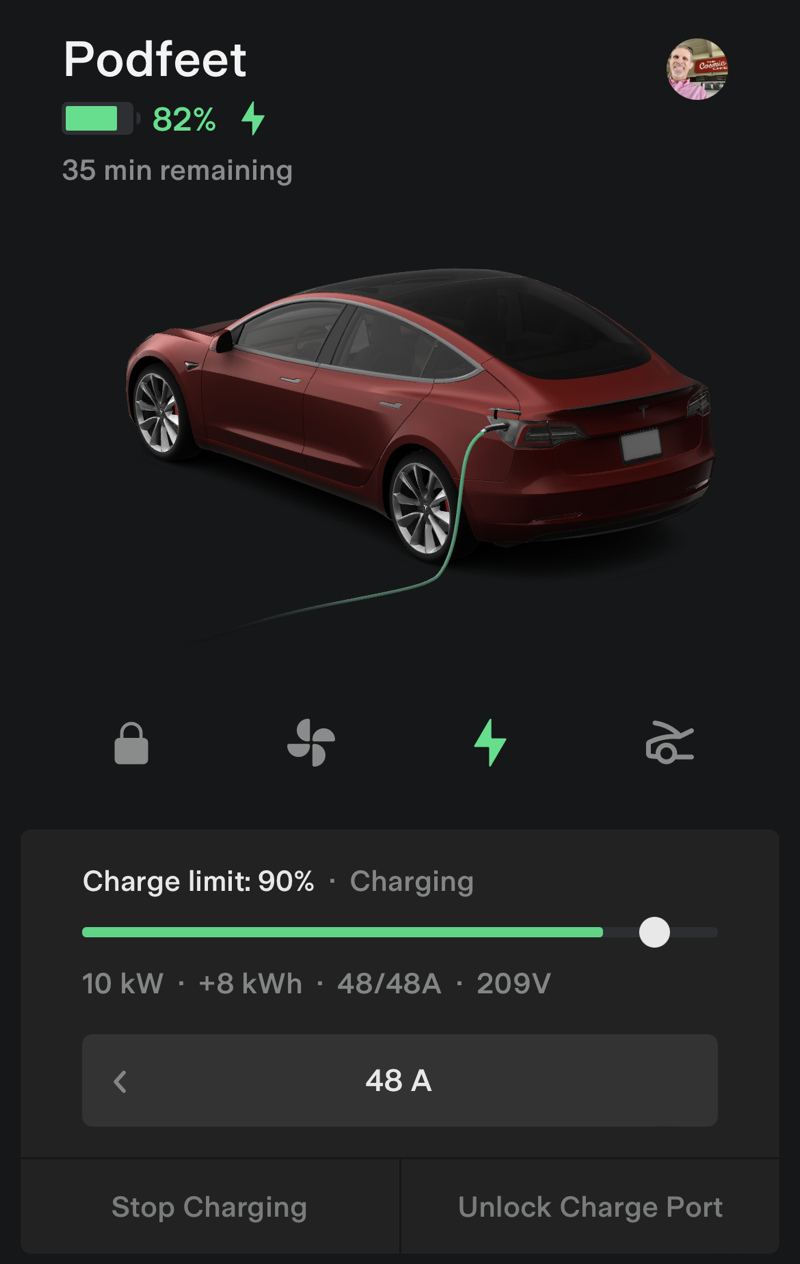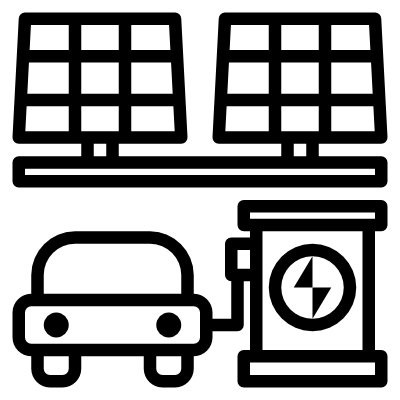When you start to consider buying an electric vehicle, you’ll be barraged by numbers with units that are very easy to confuse. Kilowatts vs. Kilowatt-Hours is one of my greatest confusions. Then there’s Level 1, 2, and 3 charging you’ll hear about EVs. Then there are whole home batteries and solar panels – it all gets very mixed up in my head.
Steve Sheridan, my resident electrical engineer joined me on NosillaCast #893 to try to clarify all of these different things. We’ve had this discussion many times and we decided to record it for you and to give you the notes Steve wrote as a reference. In order to really understand all of this, I highly recommend listening to the NosillaCast starting at 22:06 (there’s a chapter mark in the podcast.)

There is a lot of discussion lately about EVs, including
- How quickly you can charge the battery,
- How much charge their batteries will hold,
- How much range you can expect to get with a full charge.
Terminology and units are very important when talking about EV charging – I’ve noticed that many folks are using the wrong units for many EV charging terms. These are easy mistakes to make and a lot of people do it, but it is important to get the units right to be clear and avoid confusion when talking with others
So I thought this might be a good time to review some of the commonly used terms associated with EV charging and batteries. Some of this also applies to other battery types like whole-home backup batteries and even portable devices, like your laptop or phone
Here are some terms to keep in mind when talking about EV charging.
Terminology and Units for EV Charging:
- kWh or kWatt-hours – Measures how much total energy is stored in a battery. The full capacity and state-of-charge of EV batteries are measured in kWh. Here are some examples of battery capacities:
- A Tesla Powerwall whole-home battery has 13.5 kWh of stored energy
- Allison’s Model 3 has a 75 kWh battery
- Our good friend Chris Ashley’s new F-150 Lightning has a massive 130 kWh battery
- Wouldn’t it be nice to be able to use our car’s massive battery for home backup?
- W or Watts and kW or kWatts (1000 Watts) – Measures how quickly power flows into the battery and relates to how fast you charge a battery. Public and some home chargers will show kW to reflect how fast they are charging an EV.
- Example power levels:
- Incandescent light bulb – 60 to 100 Watts
- Hand-held hair dyer – about 1000 Watts or 1 kW
- Home EV charger – around 10,000 Watts or 10 kW (a typical value but can vary greatly)
- Tesla Supercharger – around 150,000 Watts or 150 kW (a typical value but can vary greatly)
- Example power levels:
- Relationship between Amps, Volts and Watts: Amps (Electric Current) x Volts (in Volts) = Watts (Power). For example, our home EV charger is on a 240V/40A circuit, so it charges at a power rate of 240V x 40 A = 9,600 Watts or 9.6 kW.
- A or Amps – Measures Electric Current which is the amount of electric charge flowing per unit of time through a wire. A typical home circuit breaker is 15 to 20 A and larger for special circuits like electric ovens and EV chargers. High amperage is what can cause wires to heat up when in use.
- V or Volts – Measures how much electric potential there is between two conductors. This is the unit that is least intuitive (in my mind) but an analogy is the potential for water to flow down a waterfall under the force of gravity. The potential, in this case, is the difference in height between the top and the bottom of the waterfall, so the greater the potential (difference in height), the faster the water will travel at the bottom of the falls and the more power it will generate. We hear volts most commonly tied to home electrical circuits that use either 110-120 Volts or 220-240 Volts in the U.S.
Levels of EV Charging and Power Levels they deliver:
The miles per hour of charge varies with the vehicle but I’ll give representative charge rates in miles/hour for a Tesla Model 3
- Level 1 (home charging with 120V outlet at 20Amps) – 1.3 to 2.4 kW or about 3 to 4 miles/hour of charge.
- Level 2 (home and public charging with 240V) – 4 to 18 kW or about 15 to 65 miles/hour of charge. This includes most home EV charging stations. For the model 3 at our house with 240V x 40A = 9.6kW, or 35 miles/hour
- Level 3 (Fast DC public and proprietary network charging) – 50 to 350 kW or about 180 to 1200 miles/hour of charge. This includes Tesla Superchargers and other EV charging networks like Electrify America, and some ChargePoint and EVgo stations.
Differences in Terminology for Large vs. Small Battery Capacities:
- Most smaller battery capacities (like those used for personal devices) are measured in Amp-hours (Ah) or milliAmp-hours (mAh), not Watt-hours or kWatt-hours like EV batteries.
- The ultimate measure of stored energy is Watt-hours or kW-hours, but you can easily derive this measure by using Amp-h or mA-hour and multiplying this by the voltage of the battery (since Amps x Volts = Watts).
- In cases where the battery voltage is standardized (like with a 12V battery or a 1.5V AA battery), then the voltage is implied and Amp-hours or mAh is used.
- However, with large EV and whole-home backup batteries, different manufacturers may use different battery voltages. So it’s clearer to use the full kWh measure since the consumer may not know the battery voltage.
Follow Steve Sheridan on YouTube at Steve’s YouTube channel or on Twitter at @spsheridan


Steve and Allison, great show. I know you were trying to keep things simple, but there is a implication that charging a EV battery is 100 % efficient; ie 75 KWh for charging a 75 KWh Tesla 3 battery. Found an online article from Car and Driver magazine from April10th 2021, by John Voelcker entitled EV Explained: Charging Losses. He states the losses can be up to 12 to 15%. The causes are the battery itself, transmission losses (wires etc) and the thermal management heating and cooling the battery pack. The Tesla 3 is specifically mentioned.
You bring up a good point, Jim. We did leave out some details like the one you mention as well as other conversion losses when converting from AC to DC power. Another related example is solar panels which are rated at a DC power level but the AC power you get at your electrical panel is 80% of the DC power the panel produces, at best. I thought about getting into that level of detail but Allison suggested we abbreviate for clarity.
One thing I’m not sure about is whether the 12-15% loss occurs when using a DC Fast Charger, like Tesla’s Supercharger. In that case, the power is being delivered as DC at a very high voltage so there is no AC to DC conversion loss. There is probably some resistive loss but it’s probably less than 12-15%.
I have to be a little bit critical of this audio segment – as a practicing electrical engineer it was painful to listen to. Why do I say that? Well, I think that your well-meaning intention to connect the content and explanations to real-world situations (like electric car charging and solar panel output) put the cart before the horse.
In a discussion like this I think that there is no way to skip over the basics of what is voltage and what is current right at the beginning, and get those down solid as concepts; then when you move on to the concepts of power and stored power it is going to make sense. I kept waiting for Steve to trot out the standard analogies, shopworn as they are, for voltage and current: voltage is like water pressure, and current is like water flow. Everybody has had experience with a water hose at some point in their lives, so this is a relatively universal analogy to employ.
Imagine you have a hose supplying water, and you want to drive a turbine to produce power. You need pressure, which is analogous to voltage, and flow, which is analogous to electric current. Pressure differences can exist between two points when there is no water flow, just as voltage difference can exist between two wires when there is no electrical connection. Higher pressures between the inlet and outlet of a pipe drive higher water flow, just as increasing the voltage across a resistor drives greater electric current flow. And just as you can get a given amount of power out of the turbine with high water pressure and low water flow, or low water pressure and high water flow, similarly with electrical power: it’s the product of voltage and current that matters.
Anyway, that was my main complaint. I did like the fact that you brought up the two different ways we measure battery capacity: kilowatt-hours, and Ampere-hours. Kilowatt-hours are truly a measure of stored energy and make sense when you don’t know or don’t have access to the voltage being employed; Ampere-hours make sense when electric charge is transferred into and drained from the battery at a known, relatively constant voltage (as it is usually with something like one of those portable USB cchargers charging and discharging at 5 volts).